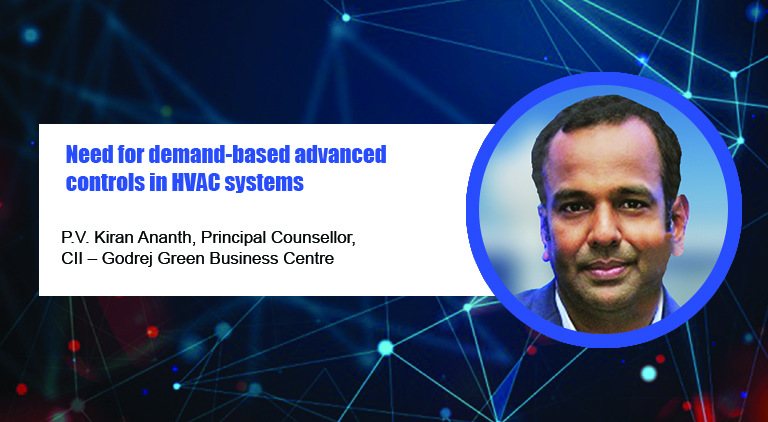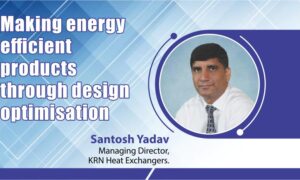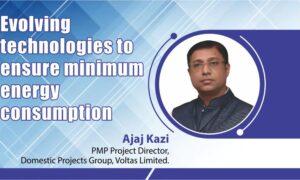P.V. Kiran Ananth, Principal Counsellor, CII – Godrej Green Business Centre in an interview talks about the potentials of energy recovery systems to obtain efficient cooling. He also talks about working towards the plans of achieving Net-Zero Buildings and Net-Zero Carbon in the future.
What kind of energy efficient methods are in place to meet the demand for efficient cooling in an HVAC system?
It is time to look towards integrating conventional cooling systems with alternate low energy consuming systems such as radiant cooling and Evaporative cooling, which in turn have less environmental impacts. Also Hybrid HVAC systems are also gaining grounds, such as geothermal HVAC, Wind towers, to name a few. There is also a need to implement demand-based advanced controls in conventional HVAC systems. Finally, there is a lot of potential through energy recovery systems where recovered energy from cooling systems can be re-utilised for heating applications or vice versa, and substitutes a portion of the demand. Also the energy efficiency of every equipment in a HVAC system such as Compressors, Chillers, Pumps, Fans, etc are much higher and with better measuring, monitoring & controls, every equipment is attempted to operate in their optimum / design efficiency zone. This results in enhancing the energy efficiency of the overall HVAC system.
Glass Buildings are gaining traction in India also. Owing to India’s variable climatic conditions, how do we ensure cooling and air quality?
Usage of High performance glasses with better U values, Solar Factor and Visual transmittance specific to every climatic zone, building typology is the new norm. Also Glass facades and specifications are decided on latest Energy Modeling software’s, which refers to the climatic condition, orientation, utility of the spaces within the building leading to selecting glasses through scientific / well informed process. Hence, glass buildings are gaining traction due to their ability to provide maximum day lighting and visual connectivity between the outdoors and the indoors, resulting in higher productivity of occupants and optimising the energy demand also.
How do you foresee India becoming a Net Zero and Net Carbon country in the future?
In the long term, India definitely needs to target Net Zero Carbon. However, the challenge for India lies in decoupling development and emissions. The country right now is focused more on electricity decarbonisation through Renewable Energy, but more efforts are required in other sectors such as industry, agriculture, waste and transportation.
Mainly Industry and Buildings should start setting their own targets with ambitious timelines for achieving Net Carbon status. Indian Green Building Council (IGBC) is working on these lines by setting a target of achieving net-zero emissions by the year 2030 for all new buildings. IGBC has already launched IGBC NET ZERO energy rating to motivate all new buildings to aspire for NET Zero Energy by 2030.
Currently, India is at a unique juncture, where many initiatives, including PAT scheme, ECBC, BEE Star Labeling, and Jawaharlal Nehru National Solar Mission are being implemented to help the country accelerate the transition to low-carbon development and achieve the Net Zero target in next 3-4 decades.
India with its rich experience in green buildings and provided with more renewable sources of energy available in abundance, the built environment could become Net Zero Energy to start with and the Net Zero Carbon.
What are the suggested design parameters to enhance energy efficiency in commercial and public spaces?
CII’s Indian Green Building Council (IGBC) through IGBC GREEN Rating programmes, since 2001, with the support of all stakeholders of building sector is encouraging a holistic and an integrated approach to further enhance the energy efficiency in both new buildings and existing building stocks. The new / green field projects offer tremendous scope to include many green features by design. The IGBC GREEN ratings encourage designers to incorporate following green features: (only illustrative / Not exhaustive)
Better orientation
Selection of High performance envelopes – Wall, Roof, Glazing
Energy efficient equipment – HVAC, Pumps, Fans, Lighting systems,
Integrated Controls – BMS, Occupancy sensors, Lighting controls,
Measuring & Monitoring equipment & devices – Energy consumption
Roof Garden
Application of High Solar Reflective Index (SRI) paints & coating for roofs
Shading devices
Vertical Green Walls / Living Walls
Daylight Harvesting – Sunpipes
Bifacial & Building-integrated solar panels
IoT integration of energy consuming equipment
Usage of BEE 4 or 5 Star rated electrical appliances – Ceiling Fans, Air conditioners, Pumps, Fans, Lights, etc
Usage of Micro wind turbines / Micro Hybrid Solar & Wind Turbines
Cookie Consent
We use cookies to personalize your experience. By continuing to visit this website you agree to our Terms & Conditions, Privacy Policy and Cookie Policy.















